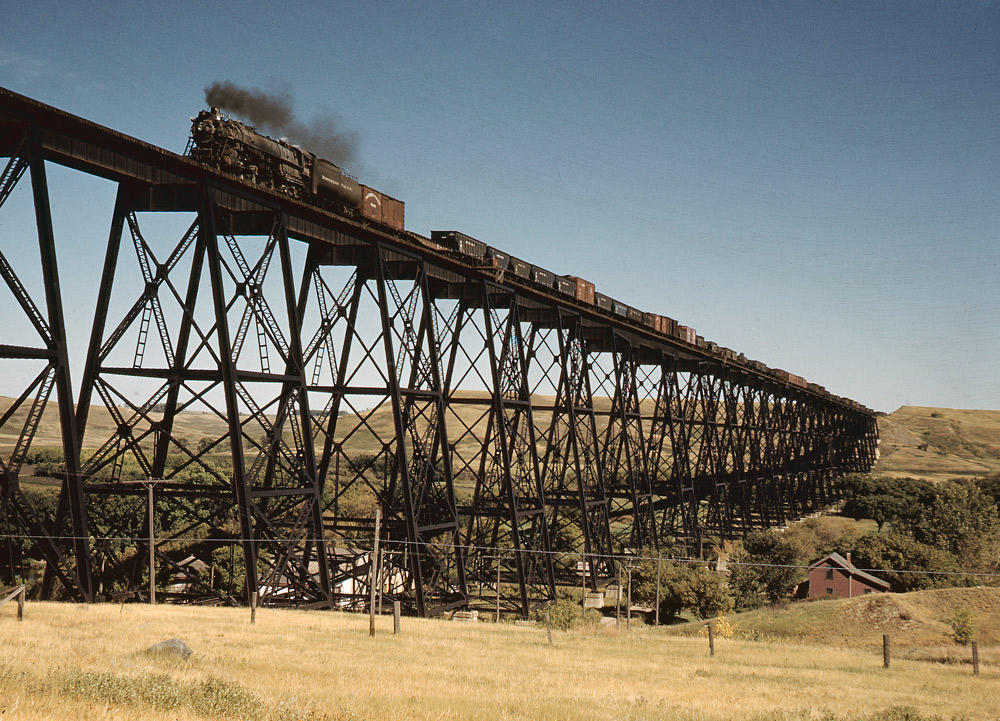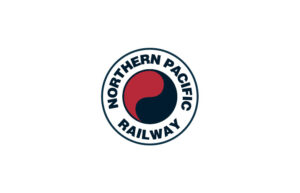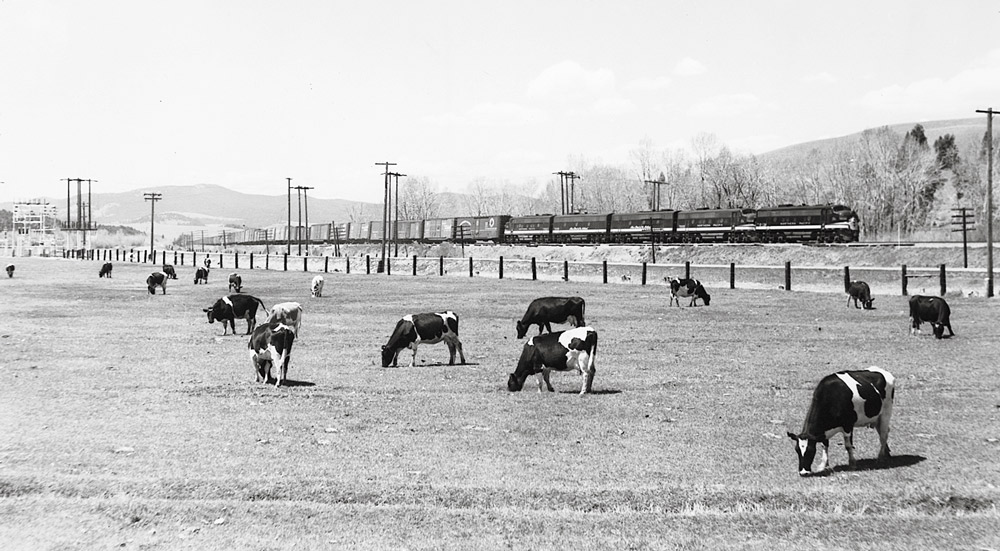
Linn H. Westcott
History of the Northern Pacific Railway
In 1864 Abraham Lincoln signed the charter of a railroad to be built from the Great Lakes to Puget Sound — the Northern Pacific Railroad. The Philadelphia banking house of Jay Cooke & Co. undertook to sell the bonds, which were to yield 7.3 percent interest, and sold $30 million worth. Work began in 1870 at Carlton, Minn., 20 miles from Duluth on the Lake Superior & Mississippi Railroad. The LS&M had just been opened between St. Paul and Duluth, and in 1872 Northern Pacific leased the road. By 1873 the NP was completed west to Bismarck, N.Dak., plus an isolated section from Kalama, Wash., on the Columbia River, to Tacoma. The Panic of 1873 wiped out Cooke and work ceased on the railroad.
NP reorganized by converting the bonds to stock, and the Lake Superior & Mississippi was reorganized as the St. Paul & Duluth. In 1881 control of the NP was purchased by Henry Villard, who also controlled the Oregon Railway & Navigation Co. and the Oregon & California Railroad. On Sept. 8, 1883, NP drove a last spike at Gold Creek, Mont., near Garrison, completing a line from Duluth to Wallula Junction, Wash. Northern Pacific trains continued on the rails of the OR&N to Portland, where NP’s own line to Tacoma resumed (it crossed the Columbia River by ferry from Goble, Ore., to Kalama, Wash.).
Even before completing the line at Gold Creek, NP began constructing a direct line from Pasco, Wash., over the Cascade Range to Tacoma. The Puget Sound area was beginning to grow, and NP wanted to reach it with its own line rather than rely on OR&N. Indeed, soon after the last-spike ceremonies, Villard’s empire collapsed and OR&N became part of Union Pacific (Southern Pacific got the Oregon & California). The Pasco–Tacoma line opened in 1887, with temporary switchbacks carrying trains over Stampede Pass until the opening of Stampede Tunnel in May 1888.
East to Chicago
 In 1889 NP contracted with the Wisconsin Central to operate through service to Chicago from the Twin Cities, and in 1890 NP leased the WC. NP organized a terminal company, the Chicago & Northern Pacific, and leased it to the WC. NP entered receivership in 1893 and defaulted on lease payments to Wisconsin Central, which in turned defaulted on the C&NP lease. Wisconsin Central became part of Soo Line, and the Chicago & Northern Pacific became the Baltimore & Ohio Chicago Terminal.
In 1889 NP contracted with the Wisconsin Central to operate through service to Chicago from the Twin Cities, and in 1890 NP leased the WC. NP organized a terminal company, the Chicago & Northern Pacific, and leased it to the WC. NP entered receivership in 1893 and defaulted on lease payments to Wisconsin Central, which in turned defaulted on the C&NP lease. Wisconsin Central became part of Soo Line, and the Chicago & Northern Pacific became the Baltimore & Ohio Chicago Terminal.
The Superior & St. Croix Railroad, chartered in Wisconsin in 1870, provided the vehicle for the reorganization of the NP. It was renamed the Northern Pacific Railway in July 1896 and on Sept. 1 of that year acquired the properties, rights franchises, and lands of the Northern Pacific Railroad. The reorganization included the absorption of the St. Paul & Northern Pacific Railway (Brainerd and Staples, Minn., to St. Paul). In 1900 NP acquired the properties of the St. Paul & Duluth, and in 1901, the Seattle & International Railway (Seattle to Sumas, Wash.). Also in 1901 NP leased its Manitoba lines (Emerson–Winnipeg–Portage-la-Prairie and Morris–Brandon) to the Province of Manitoba. (They were sold to Canadian National Railways in 1946.)

The beginnings of Burlington Northern
In 1901 Northern Pacific and Great Northern gained control of the Chicago, Burlington & Quincy by jointly purchasing approximately 98 percent of its capital stock. That same year James J. Hill and J. P. Morgan formed the Northern Securities Co. as a holding company for NP and Great Northern. The U.S. Supreme Court dissolved Northern Securities in 1904. In 1905 the two roads organized the Spokane, Portland & Seattle, which was completed from Spokane through Pasco to Portland in 1908. GN and NP attempted consolidation in 1927, but the Interstate Commerce Commission made giving up control of the Burlington a requisite for approval, a condition the roads found unacceptable.
In October 1941 NP purchased the property of the Minnesota & International Railway (Brainerd to International Falls, Minn.), which it had controlled for a number of years.
In image, Northern Pacific was the most conservative of the three northern transcontinentals. (Great Northern was a prosperous, well-thought-out railroad; the Milwaukee Road was a brash newcomer.) Bulking large in NP’s freight traffic were wheat and lumber. In the 1920s and 1930s NP suffered from smaller than usual wheat crops and competition from ships for lumber moving to the East Coast. Ship competition decreased during World War II, and postwar prosperity brought an increase in building activity and population growth to the area NP served. NP was the oldest of the northern transcontinentals and had been instrumental in settling the northern plains. It served the populous areas of North Dakota, Montana, and Washington. Its slogan was “Main Street of the Northwest,” and its secondary passenger train of the 1950s and ’60s was the Mainstreeter. Its flagship was the North Coast Limited, launched in 1900.
In 1956 NP and Great Northern again studied merger of the two roads, the Burlington, and the Spokane, Portland & Seattle. In 1960 the directors of both roads approved the merger terms. On March 2, 1970, NP was merged into Burlington Northern along with Great Northern; Chicago, Burlington & Quincy; and Spokane, Portland & Seattle.

R. V. Nixon













